I always end up thinking “that would be helpful” and end up buying another stove here is a review on the stoves I have used. I have in my arsenal loads of different stoves and they all have there advantages and best conditions to use them in.
Swedish Army Trangia
These stoves are a brilliant piece of kit so versatile in a bushcraft environment but they are quite heavy.
There are many variations of these from many different armies from around the world but the Swedish version in my opinion is the best and most versatile.
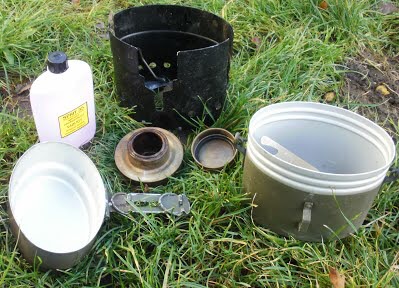
The whole kit packs into itself containing a small pan, larger pan with handle that can be hung above a fire, alcohol burner, wind shield and alcohol bottle. It is so versatile the small pan has metal loops where a stick can be slipped in to hold the pan over a fire, the base of the small pan can sit into top of large pan and when the small pan has coals placed in it it allows baking.
The windshield can be used to hold tinder etc to heat when no alcohol available.
So in any situation food can be cooked or water boiled.
Wood Gas Stove
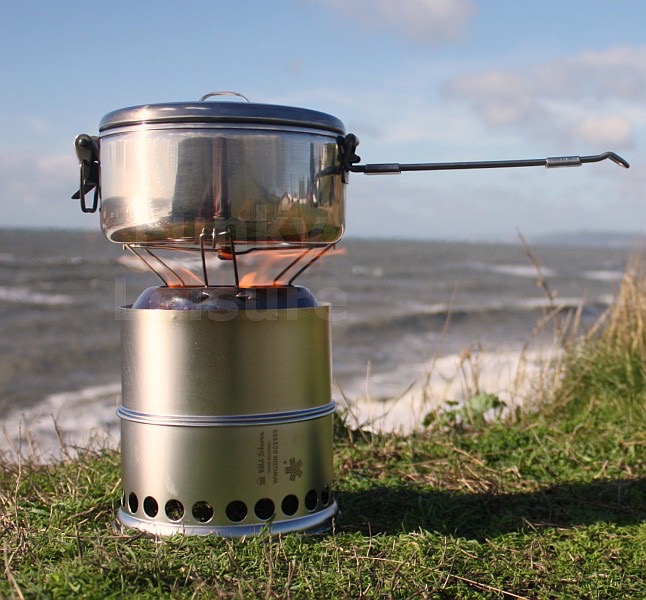
it is designed to burn wood more cleanly than any open fire due to its secondary burn. This means more heat and less soot from a few twigs. It will also burn solid fuels (like hexamine) or meths in a Trangia-style burner. The stove packs down small for compact packing, with space inside for fuel & firelighting gear. What’s more, the whole lot packs into a billy can.
Wood-gas stoves create conditions where ‘primary air’ partially combusts wood gas, then inject pre-heated ‘secondary air’ into the top of the combustion chamber to mix with the remaining smoke, resulting in a very hot, clean burn and quick and easy lighting. Only downfall is the constant re-fuelling of small sticks.
Swiss Army Stove
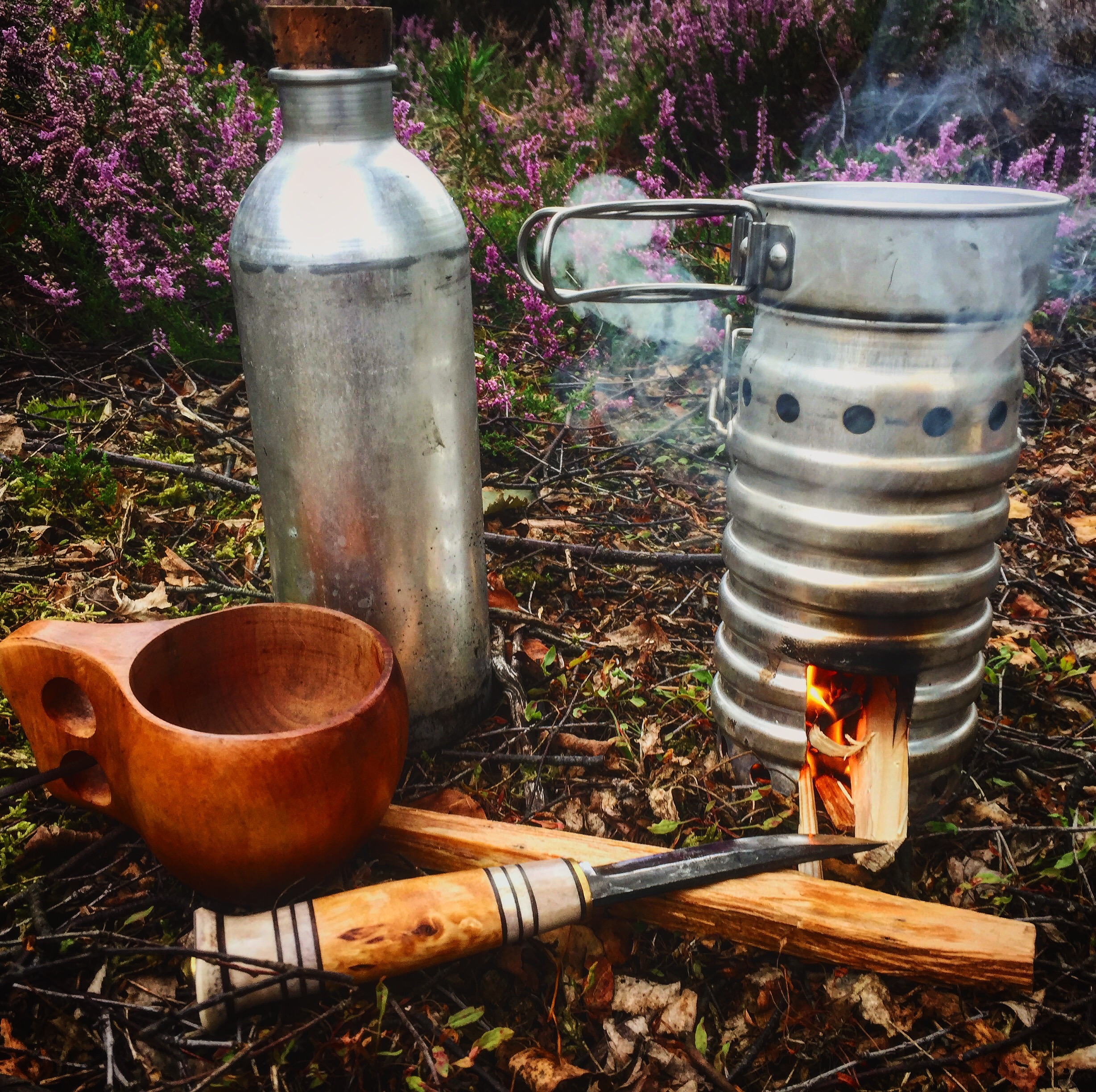
The Swiss Army Volcano Stove is a military surplus stove kit that comes with a canteen cup, an aluminum insulated bottle with a cork, and a multifuel stove.
The canteen cup holds two cups of water while the aluminum bottle holds just over a liter.
The aluminum bottles cork is not the ideal way to cap a bottle, but it is functional. If you want, it’s easy enough to replace the bottle with one that has a screw top. There are 4 features that I like about the Swiss Army Volcano Stove:Multifuel simply means that it can use multiple sources of fuel to burn.
Boy does this little stove deliver in that department! The Swiss Army Volcano stove works with solid fuels like Esbit and Trioxane solid fuel tablets.
You can also put gel fuel burners like Sterno, and alcohol burners like the Trangia Spirit Alcohol Stove inside it.
None of those fuels are my favorite though. My favorite fuels are those that you can forage at the last minute when you don’t have a ready made fuel source. It will burn twigs, leaves, bark, pine sap, and any other fuels you are able to find around your camp.
This Stove is Lightweight The Swiss Ranger Stove (another name for this stove) is made of lightweight aluminum and weighs in at only 14 ounces.
It’s not doesn’t fall in the ultralight class of stoves, but is still lightweight enough to appeal to most minimalist hikers and survivalists. For under a pound, it sure has a lot of function and versatility!
Jetboil
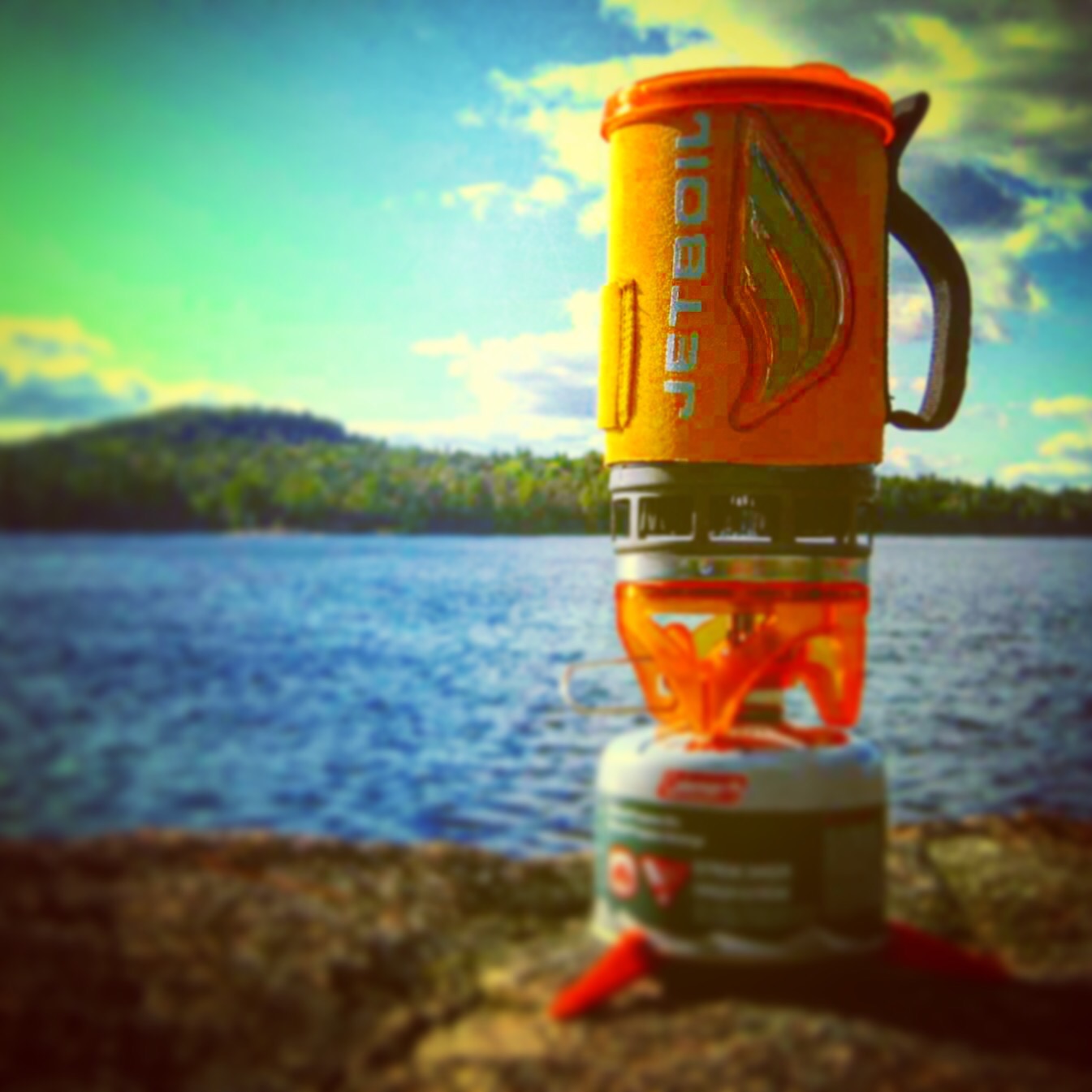
Being 1L it provides a good balance between size/weight. The neoprene outer keeps it nicely insulated, allowing you to hold it whilst brewing up without burning your hands/gloves (useful on small alpine ledges) and doubles as a cup (good weight saving).
The There is also a pot stabiliser available separately, meaning that when you’re wanting to go gourmet you don’t have to use the 1L pot provided and can instead use any standard wide base pan – this makes it a far more versatile ‘take anywhere’ stove. For those that haven’t used a JetBoil before be warned – things burn fast! If you’re looking at doing anything much more complicated than boil water or make soup/cous cous then take heed.
Whilst the addition of the colour change heat sleeve – which turns from clear to yellow whilst boiling – may have good shelf appeal I am skeptical of its practical value whilst in use. Nonetheless, I can’t really complain as it looks nice, doesn’t add much (if any) weight, as is all-in-all a useful feature.
The Flash features a piezo igniter, something of which I am a great fan. It always feels like a faff to carry/rely soley on a lighter and the convenience of a single push button is unbeatable.
The downside is when they don’t work and this was something the previous version had issues with – the igniter flimsy and prone to breaking (it did on me half way up El Cap). Fortunately a lot of thought has clearly been put into its design, it looks/feels much more robust and is recessed to prevent accidental damage. That said, I’d always carry a lighter just in case.
The second upgrade is the adjustment dial, which has been changed from a small knob to a much larger – and more usuable – wire, therefore making it much easier to use with gloves on (and more easy to adjust accurately in general). This has a positive impact for those looking to actually ‘cook’ in the JetBoil as it allows something close to simmering to be attained. I think the jetboil is a great piece of kit for heating water but for cooking MRE’s I wouldn’t want to use it.
Kelly Kettle
[wpvideo SsHXn4hE ]
The Kelly Kettle is a family invention dating back to the 1890’s on the west coast of Ireland. It burns any naturally flammable material – twigs, grass, leaves, pine cones, etc.– and is able to boil water extremely fast, even in poor weather, which makes it a great off-grid cooking tool.
One of the best things about the Kelly Kettle is that you don’t have to store fuel. The energy is provided by burning twigs or dry grass; even in an urban setting these things can be found in a yard or local park. With another cooking device wood or propane might need to be rationed in a emergency situation, but with this handy little kettle stove all you have to worry about rationing is the food.

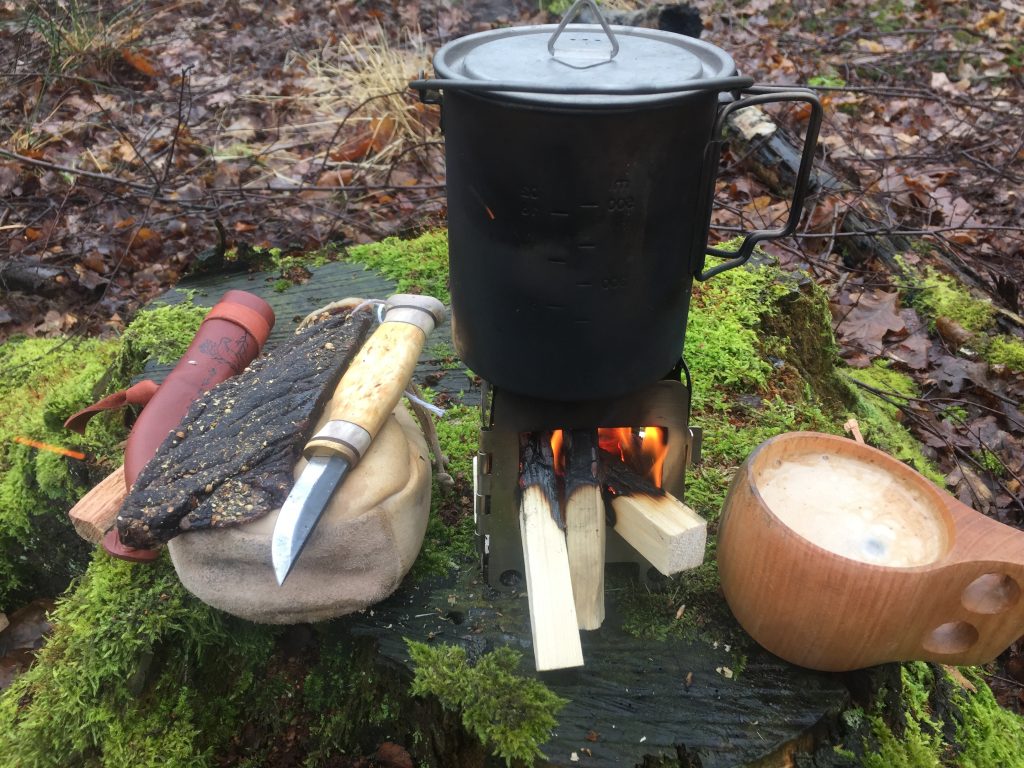

I’m the same with stove. I cannot resist buying them.
I’ve just added a really lightweight cook set for lightweight hiking.